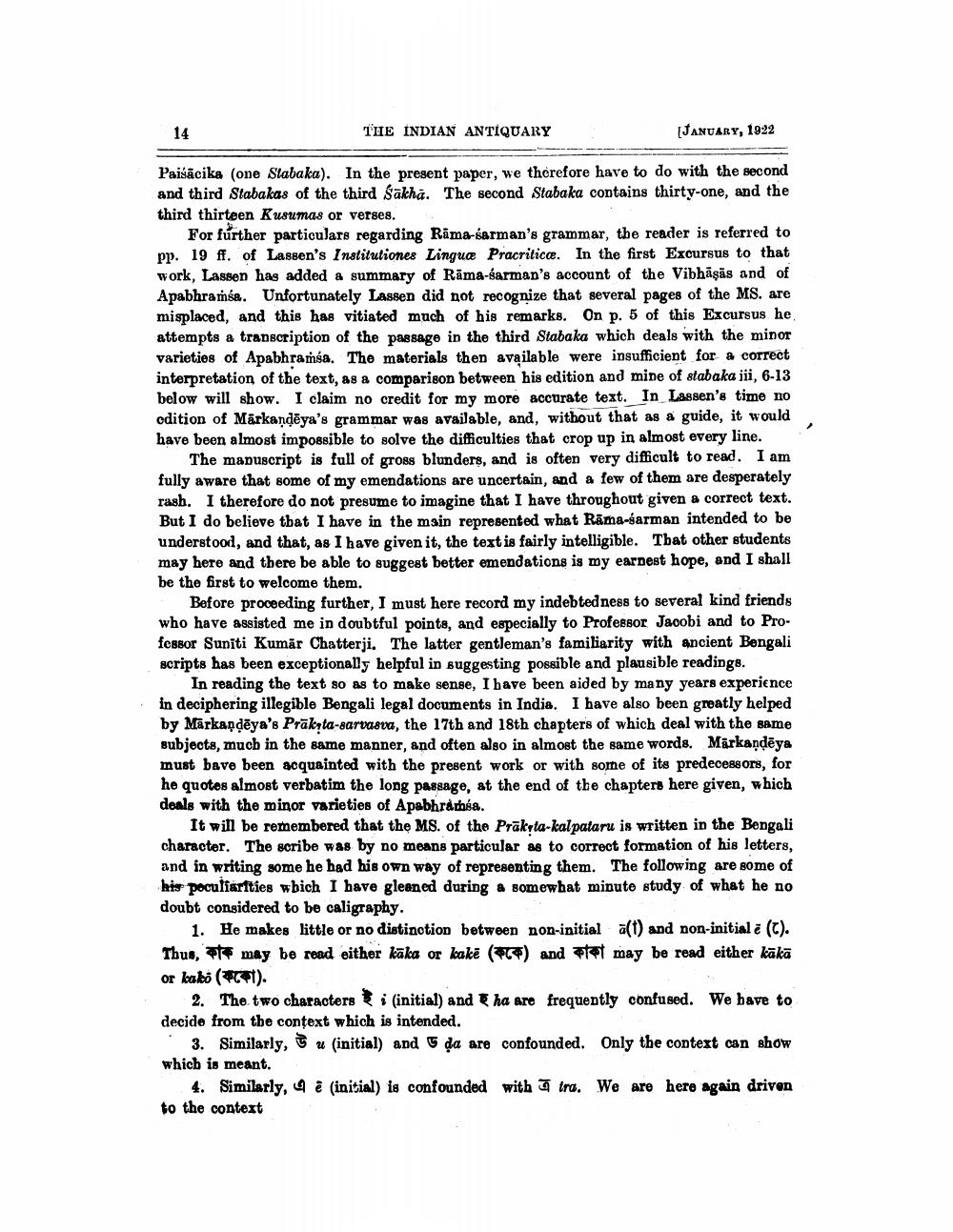________________
TIE INDIAN ANTIQUARY
JANUARY, 1922
Paisācika (one Stabaka). In the present paper, we therefore have to do with the second and third Stabakas of the third Sakha. The second Stabaka contains thirty-one, and the third thirteen Kusumas or verses.
For further particulars regarding Rama-sarman's grammar, the reader is referred to pp. 19 ff. of Lassen's Institutiones Linguee Pracritice. In the first Excursus to that work, Lassen has added a summary of Rama-sarman's account of the Vibhāṣās and of Apabhramśa. Unfortunately Lassen did not recognize that several pages of the MS. are misplaced, and this has vitiated much of his remarks. On p. 5 of this Excursus he attempts a transcription of the passage in the third Stabaka which deals with the minor varieties of Apabhrama. The materials the available were insufficient for a correct interpretation of the text, as a comparison between his edition and mine of stabaka jii, 6-13 below will show. I claim no credit for my more accurate text. In Lassen's time no edition of Märkandēya's grammar was available, and, without that as a guide, it would have been almost impossible to solve the difficulties that crop up in almost every line.
The manuscript is full of gross blunders, and is often very difficult to read. I am fully aware that some of my emendations are uncertain, and a few of them are desperately rash. I therefore do not presume to imagine that I have throughout given a correct text. But I do believe that I have in the main represented what Rama-sarman intended to be understood, and that, as I have given it, the text is fairly intelligible. That other students may here and there be able to suggest better emendations is my earnest hope, and I shall be the first to welcome them.
Before proceeding further, I must here record my indebtedness to several kind friends who have assisted me in doubtful points, and especially to Professor Jacobi and to Professor Suniti Kumar Chatterji. The latter gentleman's familiarity with ancient Bengali scripts has been exceptionally helpful in suggesting possible and plausible readings.
In reading the text so as to make sense, I have been aided by many years experience in deciphering illegible Bengali legal documents in India. I have also been greatly helped by Markaņdēya's Prākta-sarvasva, the 17th and 18th chapters of which deal with the same subjects, much in the same manner, and often algo in almost the same words. Markandēya must bave been acquainted with the present work or with some of its predecessors, for ho quotes almost verbatim the long passage, at the end of the chapters here given, which deals with the minor varieties of Apabhrasa.
It will be remembered that the MS. of the Prākyta-kalpataru is written in the Bengali character. The scribe was by no means particular as to correct formation of his letters, and in writing some he had his own way of representing them. The following are some of his poculiarities wbich I have gleaned during a somewhat minute study of what he no doubt considered to be caligraphy.
1. He makes little or no distinction between non-initial ä(t) and non-initial ë (t). Thus, * may be read either kāka or kake (***) and ate may be read either kākā or kabo (Ct).
2. The two charactersti (initial) and ha are frequently confused. We have to decide from the context which is intended.
3. Similarly, t u (initial) and 5 da are confounded. Only the context can show which is meant.
4. Similarly, 9 e (initial) is confounded with tra. We are here again driven to the context




